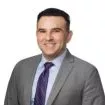- with Inhouse Counsel
- in Africa
- with readers working within the Technology industries
The USPTO just changed how interviews between a USPTO patent examiner and a patent applicant are treated. On October 2, USPTO management revised the examiner Performance Appraisal Plan (PAP) for FY 2026, capping compensation for interviews at one hour per round of prosecution.
Previously, examiners earned an hour of credit for each interview, with no real cap, so long as the discussions were productive. Under the new system, any additional interview now requires supervisory approval and a showing that the second or subsequent interview will "advance prosecution."
This shift appears to clash with long-standing Manual of Patent Examining Procedure (MPEP) guidance, which recognizes that interviews are central to advancing prosecution. As MPEP § 713 states:
"Discussions between an applicant and an examiner are often
indispensable to advance the prosecution of a patent application.
Generally, interviews that improve the mutual understanding of
specific issues in an application should be promoted. Properly
conducted, an interview can bridge the gap between an examiner and
an applicant with regard to the substantive matters at issue in an
application. Interviews often help to advance prosecution and
identify patentable subject matter. The applicant and the examiner
should consider the advantages of conducting an interview to
advance the prosecution of a particular patent application.
Positions presented during an interview should be advanced with
decorum and courtesy."
— MPEP § 713 (Interviews)
MPEP § 713.01 makes after-final interviews discretionary, meaning examiners may deny them if they believe the discussion will not materially advance prosecution. Now, with the new PAP rule, examiners have a further disincentive: no compensation unless they secure supervisory approval.
In practice, this means we're likely to see more denied after-final interviews, especially if one already took place post–first action, and fewer examiner-initiated interviews, which have historically helped applicants and examiners clarify issues early and move toward allowance. One examiner noted that their Supervisory Patent Examiner (SPE) already said they'll automatically approve all requests, so we'll have to wait and see if that becomes the norm (fingers crossed).
In practice, I've only had a small minority of examiners deny interviews. It's fine, my feelings weren't hurt. Okay, maybe a little. Most have been collaborative, willing to take an extra call when an application was complex or when a discussion could break an impasse. That flexibility just got harder to exercise.
Interviews have always been one of the most effective tools to move prosecution forward efficiently. They humanize the process, prevent misunderstandings, and often avoid unnecessary Requests for Continued Examination (RCEs).
Now, that collaboration comes with friction. In a world where even dating is digitized, interviews were one of the few chances to actually "reach out and touch someone." They reminded us that behind every action and amendment are two people trying to reach understanding. Taking that away does not make the process more efficient; it makes it slower, less personal, and ultimately more costly in the long run.
I used to joke with examiners and say, "I hope this is the last time we speak, since allowance is next." Now it'll be, "I hope this is the last time we speak, since allowance is next. If not, I hope we can speak again—with discretionary approval." A little human connection still goes a long way, even in patent law.
The content of this article is intended to provide a general guide to the subject matter. Specialist advice should be sought about your specific circumstances.


